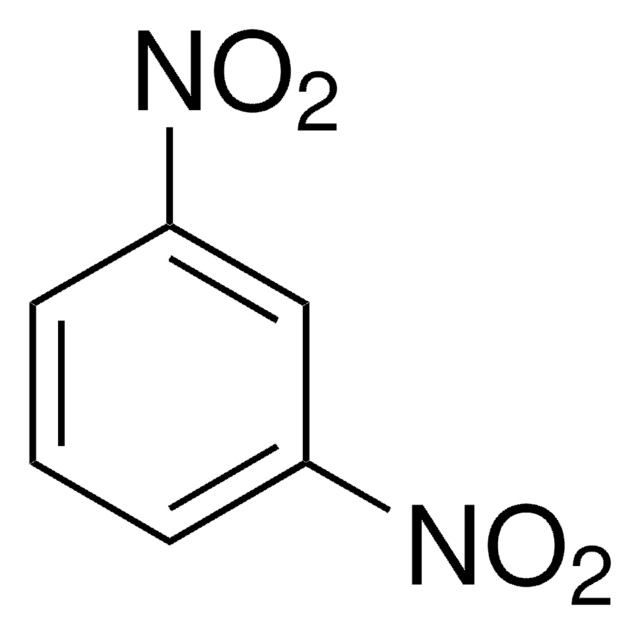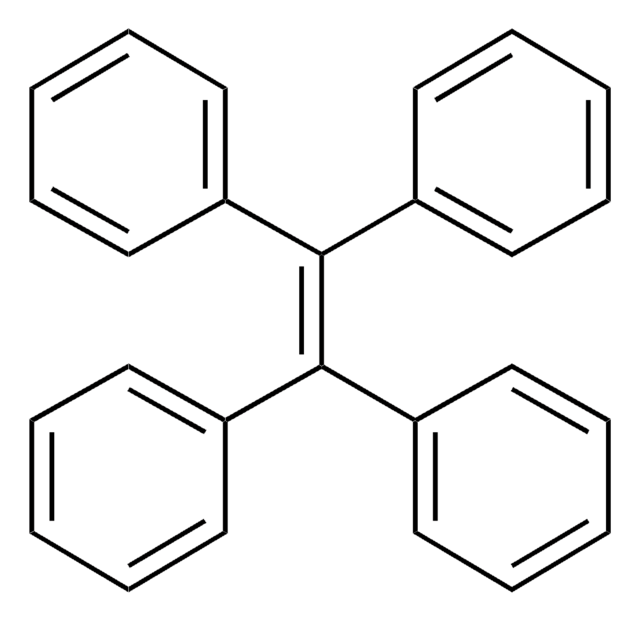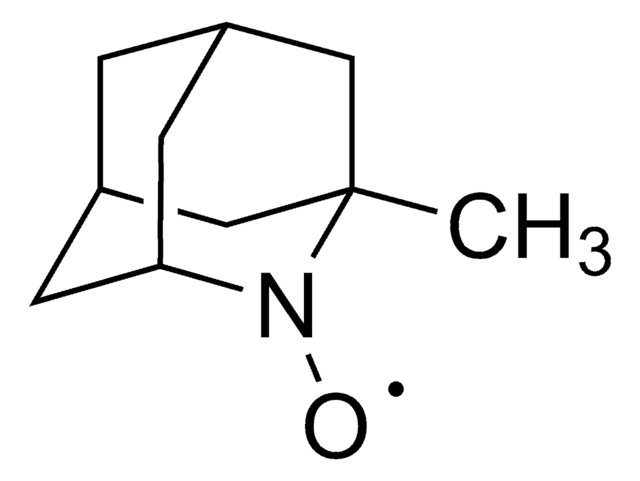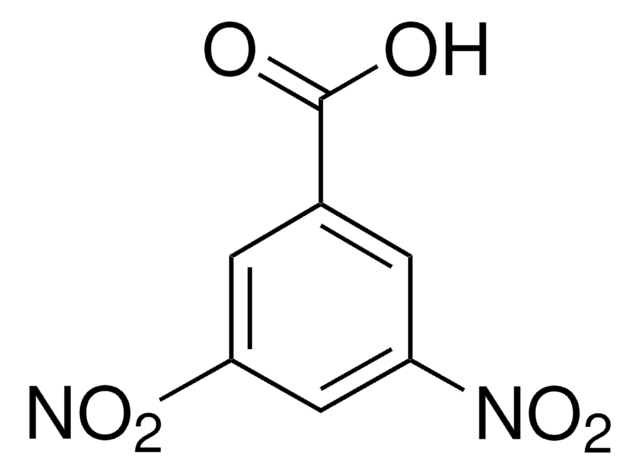Wichtige Dokumente
126632
1,2-Dinitrobenzol
97%
Synonym(e):
o-Dinitrobenzene
About This Item
Empfohlene Produkte
Qualitätsniveau
Assay
97%
Form
solid
bp
319 °C/773 mmHg (lit.)
mp (Schmelzpunkt)
114-117 °C (lit.)
Funktionelle Gruppe
nitro
SMILES String
[O-][N+](=O)c1ccccc1[N+]([O-])=O
InChI
1S/C6H4N2O4/c9-7(10)5-3-1-2-4-6(5)8(11)12/h1-4H
InChIKey
IZUKQUVSCNEFMJ-UHFFFAOYSA-N
Suchen Sie nach ähnlichen Produkten? Aufrufen Leitfaden zum Produktvergleich
Verwandte Kategorien
Allgemeine Beschreibung
Anwendung
- A highly divergent Pictet-Spengler approach for pyrrolo quinoxalines from aryl amine using 1,2-dinitrobenzene as an oxidant: Discusses the utility of 1,2-dinitrobenzene as an oxidant in organic synthesis, relevant for developing novel pharmaceuticals (Pardeshi et al., 2019).
Signalwort
Danger
H-Sätze
Gefahreneinstufungen
Acute Tox. 1 Dermal - Acute Tox. 2 Inhalation - Acute Tox. 2 Oral - Aquatic Acute 1 - Aquatic Chronic 1 - STOT RE 2
Lagerklassenschlüssel
6.1A - Combustible acute toxic Cat. 1 and 2 / very toxic hazardous materials
WGK
WGK 3
Flammpunkt (°F)
302.0 °F - closed cup
Flammpunkt (°C)
150 °C - closed cup
Hier finden Sie alle aktuellen Versionen:
Besitzen Sie dieses Produkt bereits?
In der Dokumentenbibliothek finden Sie die Dokumentation zu den Produkten, die Sie kürzlich erworben haben.
Unser Team von Wissenschaftlern verfügt über Erfahrung in allen Forschungsbereichen einschließlich Life Science, Materialwissenschaften, chemischer Synthese, Chromatographie, Analytik und vielen mehr..
Setzen Sie sich mit dem technischen Dienst in Verbindung.










